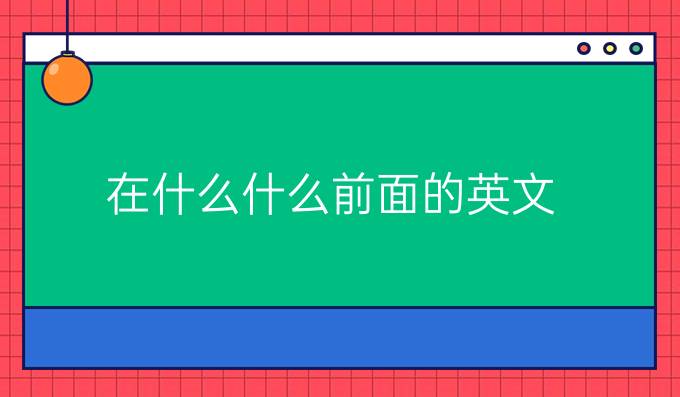KET 在线
模拟测试
小程序在线模拟测试

PET 真实
考场模拟
OPFUN Talk萌课堂,专注青少在线语言启蒙!——寰宇咨询中心资讯网
![]() 上海
上海
![]() 18761612306
18761612306

在英语学习中,我们经常会遇到一些短语或者单词,需要在其前面添加特定的介词或者副词才能使用得当。例如,“in front of”这个短语就是一个很典型的例子,意为“在……前面”。但是,由于英语中存在大量的介词和副词,我们该如何正确地使用它们呢?本文将从多个角度为大家详细解析不同短语的前置词或副词,帮助读者在英语学习中更加得心应手。
“in front of”是一个非常常见的短语,意为“在……前面”,例如“I am standing in front of the building.”但是,我们需要注意的是,“in front of”和“in the front of”是不同的,前者只需要一个in就可以,而后者需要加上the,例如“The car is parked in the front of the garage.”除了这个区别外,我们还需要注意一些使用技巧,比如:“in front of”通常用于描述一个物体的位置,而不是人的位置,例如“The tree is in front of the house.”
“behind”是另一个常用的介词,意为“在……后面”,例如“There is a cat behind the sofa.”和“Don't look behind you.”这个介词的使用比较简单,我们只需要注意一些常见的搭配即可。例如,“behind the scenes”表示“在幕后”,“behind schedule”表示“落后于计划”,“behind the wheel”表示“坐在方向盘前”,等等。
“beside”是一个介词,意为“在……旁边”,例如“There is a park beside the river.”使用时我们需要注意,“beside”和“besides”是不同的,前者表示“在旁边”,后者表示“除了……之外”。此外,我们还需要注意“beside”和“next to”之间的区别,前者表示两个物体之间有一段距离,后者表示两个物体直接相邻,例如“We live next to the park.”
“above”是一个介词,意为“在……上面”,例如“The sun is above the clouds.”除了表示位置之外,“above”还可以表示程度、等级等,例如“He is above average in math.”和“This problem is above my ability.”此外,我们还需要注意“above”和“over”之间的区别,前者表示垂直方向上的上方,后者表示水平方向上的上方,例如“The plane is flying over the city.”
“in”是一个非常常见的介词,意为“在……里面”,例如“There is a book in the bag.”和“She is in the kitchen.”但是,我们需要注意的是,“in”有时也可以表示位置,例如“The park is in the city.”此外,“in”还可以表示时间、状态等,例如“I will see you in an hour.”和“He is in good health.”
